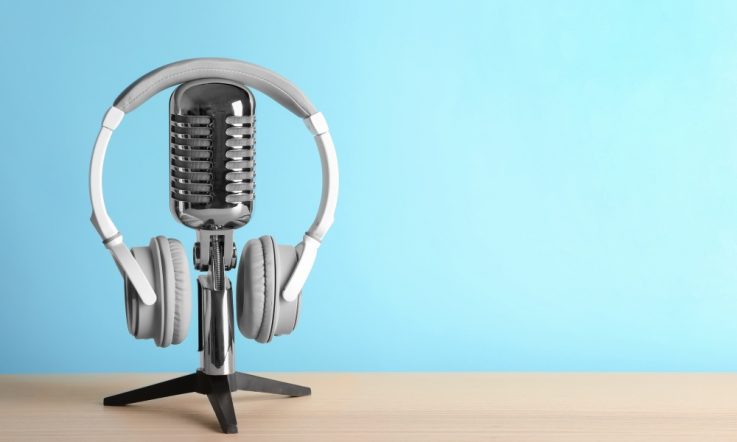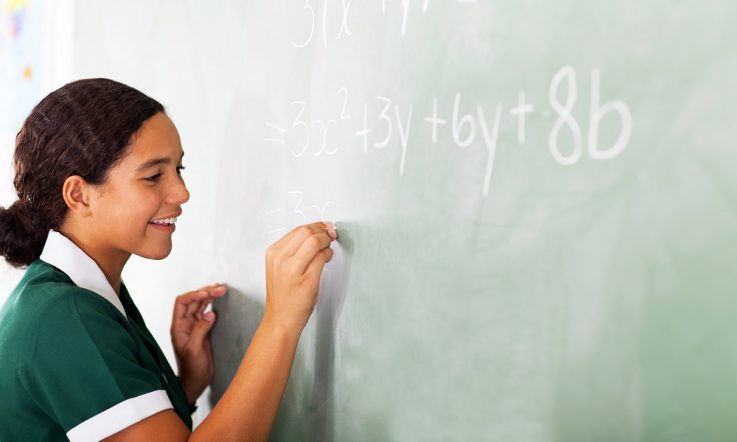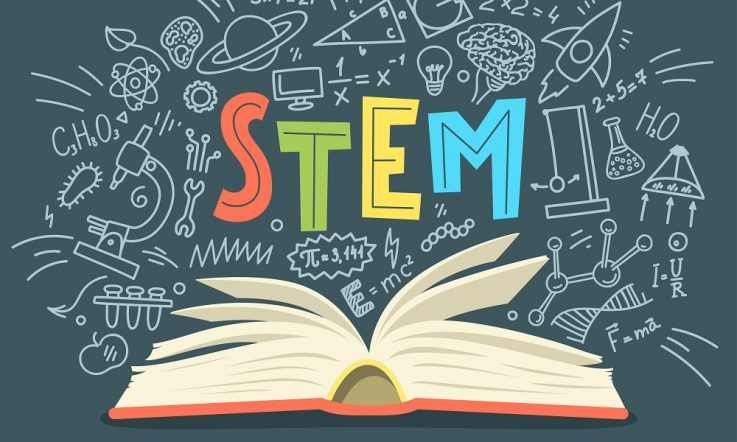This podcast from Teacher is supported by the University of Melbourne's Graduate School of Education. Discover how you can create meaningful change in your school or business with a degree in positive psychology.
Hello, and thanks for downloading this episode of Teacher Staffroom, where we catch you up on the latest evidence, insight and action. I'm Dominique Russell.
The team at Teacher have spoken to a lot of interesting educators this month, and some great practical pointers for the classroom have come out of these conversations. In this episode, we'll be looking at some budget-friendly science experiments for both primary and secondary students; some engaging mathematics activities perfect to finish off the term; and some implications for classroom educators of some new research that's been published.
I'll be posing some questions throughout this episode, so it's a great opportunity to sit down with your colleagues to discuss how these stories could be relevant to your school context. That's this episode of Teacher Staffroom. Let's jump in.
I had the pleasure of speaking with the two recipients of this year's Prime Minister's Prizes for Excellence in Science Teaching this month. One primary school educator and one secondary school educator are named winners each year, and for 2019, these were Grade 3 and 4 teacher Sarah Finney from Stirling East Primary School in South Australia, and Dr Samantha Moyle from Brighton Secondary School, also in South Australia. Both Sarah and Samantha joined me for a recent podcast episode to speak all about some successful classroom activities they implemented to increase student engagement.
Dr Samantha Moyle is all about ensuring she teaches Science using a really integrated approach. She spoke a lot in the episode about how she integrates the separate subjects of science as much as possible in her teaching to show students how Chemistry, Biology, Physics and Psychology can all inform each other. She also gets students involved in hands-on learning, and here she explains one particular activity that wasn't only budget-friendly, but received really great feedback from students.
We just recently with the Year 10 students did a forensics unit. And we just had a mannequin for our uniforms lying around, so we used that and just made fake blood out of gelatine and red food colouring. And that was great too, because the blood, as it cooled, it coagulated and gave that real world aspect. And that wasn't expensive at all. And the students had this very immersive experience. They all got dressed up in lab coats and were forensics teams and so they engaged as different aspects of the forensic teams, essentially characters, and all had different roles in processing that crime scene.
That was Samantha Moyle there. Sarah Finney, the other recipient of this year's prize, has a strong focus on integrating digital technologies into traditional learning activities in her classroom. Here, she explains how she had students use their iPads to enhance a learning activity they completed for National Science Week earlier this year.
One of the things that came from that was one of the ideas for National Science Week, that you could open up an Oreo cookie and scrape away at the cream to make a picture of various stages of the moon, because the moon was the focus of National Science Week. And so I took that idea and got my children to do it, but because we have our iPads, I said ‘well we can now make stop motion animation of the whole experience and just add to it and make it more alive for the children'. So that's one thing that we can do.
So, considering the experiences Samantha and Sarah shared just there, I have some questions to put to you. Consider a unit of work you'll be teaching soon. Is there space to combine the use of digital technologies with traditional learning activities?
And, Dr Samantha Moyle encourages teachers to look for different opportunities to connect with other learning areas, in order to give students an integrated approach to learning. With your colleagues, discuss how you could improve the connectedness across the curriculum. What are you already doing well?
Now, the use of iPads in classrooms across Australia has been widespread for quite some time, and, as Sarah pointed out, can enhance some learning activities.
You might've heard that the Australian Government recently announced the establishment of the Australian Research Council Centre of Excellence for the Digital Child. The research centre will undertake a world-first longitudinal study into the impact of digital technology on children from birth to eight-years-old.
We spoke with the lead researcher at the centre, Professor Susan Danby, about why they're undertaking this research and what they hope to achieve. One aspect I found particularly interesting, though, was what she had to say about the role of early childhood educators in this space. She said they're often asking questions about how to best integrate digital technology into a play-based pedagogy focus. So, that brings me to another question. Do you find it challenging to effectively introduce digital devices into the curriculum? What's worked well in your classroom setting? What hasn't?
I'll place the link to that full article in the transcript of this podcast, which you can find at our website – teachermagazine.com.au.
You're listening to a podcast from Teacher magazine, supported by the University of Melbourne's Graduate School of Education. Whether you're interested in applying positive psychology principles in your personal or professional life, gain the tools you need to create positive change and to support individuals in a range of contexts.
I'd like to take you now to some interesting research findings we shared in an infographic. It comes from two new surveys out of the UK which detail how many secondary school students have used a private tutor outside school, and how many primary and secondary teachers have carried out tutoring in their own time.
It showed that 27 per cent of students aged 11- to 16-years-old have received private tuition at some point. And, 14 per cent of primary school teachers had carried out private tutoring during the last two years. That's compared to 24 per cent of secondary teachers. So, as a primary or a secondary school teacher, have you carried our private tutoring in your own time during the last two years? And, what are you reasons for doing so? It'd be really fascinating to hear your perspectives and experiences.
Another interesting resource for all educators is the findings from a new study that details the most popular career aspirations among students. The seven year study, undertaken by the University of Newcastle, involved interviews with over 15 000 students, parents and carers, and teachers from across New South Wales.
Laureate Professor Jenny Gore and postdoctoral researchers Sally Patfield and Leanne Fray wrote about their findings this month for Teacher, and they had this to say about the implications for teachers:
Teachers and schools leaders play an important role in shaping and nurturing the aspirations of young people. However, in the context of a burgeoning range of programs designed to build awareness of post-school pathways – such as outreach initiatives implemented by universities and government-led funding interventions – the everyday role of teachers has largely been overlooked. Our research highlights how schools and teachers can open up future pathways and help young people to keep their options open.
So, that brings me to another question to think about. The research found the most popular career aspirations among students included sportsperson, teacher and veterinarian. Think about your own students. Are you aware of their occupational and educational aspirations? And how do you nurture those aspirations?
And finally, to finish off on our topic of education resources – we heard from Mathematics teacher Holly Millican in a recent video. She demonstrated three activities she has students work on in those last few lessons before the end of term. Here she is describing an activity that sounds really engaging, and only requires a piece of paper.
Now my second activity is dodecahedron paper folding. So this is a really fun activity, because it's something the kids can actually take home if their team manages to complete the task in class. So students are given a piece of A4 paper and I will teach them how to fold it into this shape. Now from here they are to work as a team to create 12 of these that then all go together to create a finished product which is a 3D dodecahedron. Now if you jump onto Google and you type dodecahedron paper folding, there are instructions on there which can take you through exactly how to fold the paper and exactly how the kids need to put it all together.
That was Holly Millican there. I'm interested to find out what games or activities you use in those last few lessons leading up to the school holidays. Which ones are particularly successful in engaging students?
That's all from me today, and you're all caught up on the latest evidence, insight and action. I'll place links to all the content and resources I've mentioned in this podcast in the transcript of this episode, which you'll be able to find under the podcast tab at our website, teachermagazine.com.au. Remember, we'd love to hear from you about how you've been using our content in your classroom. You can get in touch with us via our website, or find us on Twitter and Facebook by searching ‘Teacher ACER'. Thanks for listening!
You've been listening to a podcast from Teacher, supported by the University of Melbourne's Graduate School of Education. Where we recognise the unique ability for you to impact future generations. Discover your ripple effect today.



